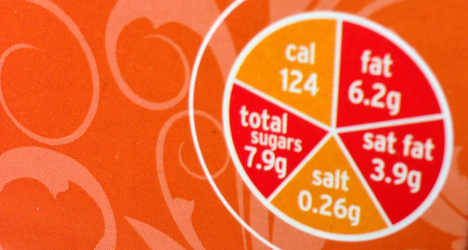The British government in June announced plans to roll out the coloured food labelling system, which targets food high in fat, sugar and salt, in a bid to cut obesity rates.
On Tuesday, Italy raised the issue at the EU's Council of Ministers over concerns that giving a red label to high-fat Italian food such as olive oil could have a negative impact on the country's trade to the UK, Il Sole 24 Ore reported. Italy was supported by the French, Greek and Spanish delegations in Brussels, the newspaper said.
Under the labelling system, olive oil – praised for helping fend off Alzheimer's disease and cancer – received a red label as a fatty food.
SEE ALSO: Olive oil may avert memory loss – study
The system was met with a backlash in the Italian press: “Food traffic lights – London against Rome” read a headline in Italy’s La Stampa newspaper on Wednesday, while Corriere della Sera said “Italy is in battle against London”.
Italian Health Minister Beatrice Lorenzin last week held talks over the matter in London with Jane Ellison, the UK’s under secretary of state for public health, Corriere reported.
“Scaring consumers is wrong," Lorenzin said, adding that the Mediterranean diet should instead be promoted.
"[It's about] eating more fish, white meat, olive oil, fresh fruit and vegetables – and less bread and pasta."
The Mediterranean diet has been added to UNESCO’s List of the Intangible Cultural Heritage of Humanity, although UN backing cannot hide the high-fat nature of some celebrated Italian foods.
The UK’s National Health Service (NHS) says that “any red(s) on the label means the food is high in fat, saturated fat, salt or sugars and these are the foods we should cut down on”.
But La Stampa argues the scheme risks people missing out on the health benefits of products such as olive oil, and could also damage the image and distribution of traditional Italian products.
SEE ALSO: Italians discover cancer-fighting olive oil
Tonio Borg, European Commissioner for Health, told the newspaper he was monitoring the system's development. “European legislation allows each state to introduce similar measures on a voluntary basis. At the moment, based on the information we have, we don’t have reason to think anything else is happening,” he said.
However, he said "we would not hesitate to intervene” should any irregularities in the UK’s food labelling be found.
Responding to the criticism, a spokesperson for the UK's Department of Health said "there is no evidence of any barriers to trade" with Italy or other countries.
"Our scheme is not about stopping people from eating certain foods, but providing a quick and easy way to help shoppers to make informed choices and understand how these foods fit into their overall diet," the spokesperson told The Local.
Don't miss a story about Italy – Join us on Facebook and Twitter.




 Please whitelist us to continue reading.
Please whitelist us to continue reading.
Member comments